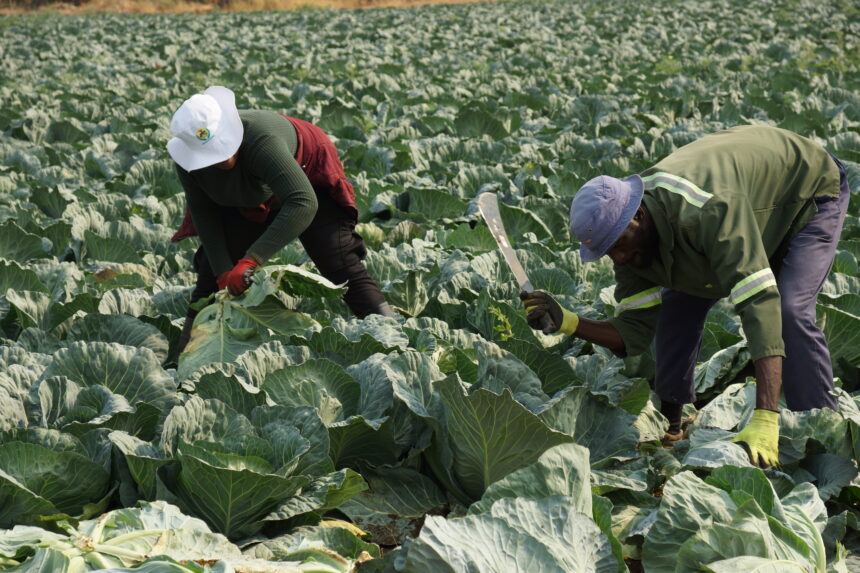Namibia’s endeavour to achieve food security at household, community, regional and national levels, calls for the adoption of more systematic and precise crop production methods to attain increased crop yields.
With the good rainfall received across the country this year, and with maize and mahangu rainfed crop fields currently approaching maturity, it is increasingly evident that success lies in a farmer‘s preparedness.
Moreover, the few cases of pest outbreaks such as fall armyworms and locusts pose a major threat to yield potential for many farmers. This raises the question; Are we really prepared to care for crops from planting to harvesting?
This raises the importance of adopting a crop management plan. By simple definition, a crop management plan is a detailed guide outlining how crops will be grown, from planting to harvest, with the goal of maximising yield and minimising costs.
The lack of a crop management plan may have hindering effects on a crop farmer‘s productivity, and consequently compromise the profitability of the crop enterprise.
A crop management plan is essential in assisting a farmer to plan production. Firstly, it enables a farmer to plan for land preparation beforehand.
This is important to ensure that the water and soil requirements of the crops are met sufficiently.
During this phase, a farmer may collect soil samples that will be analysed to determine the quantity of macro and micronutrients that must be added to the soil during land preparation.
In this phase, a farmer will also choose a crop variety that is able to grow well in the climatic and soil conditions that prevail in the area, and that is aligned with the demand patterns of the target market to maximise profit.
The second aspect considered in the crop management plan is the growing phase of the crop. The plan should incorporate the actual seed-planting stage, transplanting, irrigation schedules, weeding, etc. During this phase, a farmer must be prepared for activities that safeguard the crops.
During summer months, a farmer must ensure that crops are irrigated twice a day (early morning and late evening) to ensure an adequate amount of water is applied daily to meet the water requirements of the crop.
Furthermore, a farmer may be required to develop a fertilising programme that ensures that adequate levels of Nitrogen, Phosphorus, Potassium, Calcium, Sulphur, Magnesium, Iron, Zinc, etc, are met throughout the growing period.
Success will also depend on an effective spraying programme to timeously control or avoid the occurrence of diseases and pest outbreaks.
Scouting must be an activity that is outlined in every crop farmer‘s crop management plan. For instance, if a farmer grows tomatoes over a 90-day period, it is essential to ensure that all diseases and pests are identified beforehand, and that the necessary agrochemicals are procured to address such issues before they occur.
This must be stretched over the 90-day growing period to address the different diseases and pests.
This can also be addressed by growing some crops, such as onions, that can serve as a repellent. Moreover, homemade organic chemicals must be prepared beforehand.
Harvesting and storage is the final phase that must be outlined in a farmer‘s crop management plan.
To this end, adequate clean space for harvesting must be allocated that enables a farmer to sort and grade produce for markets. If the distance to target markets is extensive, it is essential to ensure the storage area is in a condition that can preserve produce without compromising shelf life while transport to the market is being sourced.
This component must be accompanied by a proper record-keeping system documenting key data like planting dates, fertiliser applications, and pest control measures for future reference.
In conclusion, a crop management plan is an essential tool in crop production that has the following benefits for crop farmers. Below are some of the benefits:
Increased productivity: Optimising growing conditions can lead to higher yields.
Cost-saving: Efficient resource utilisation can reduce input costs.
Resource Optimisation: Effective planning helps allocate resources efficiently.
Sustainable practices: Crop management plans can promote sustainable farming practices.
Improved planning: Provides a roadmap for future seasons, allowing for adjustments and improvements based on past performance.
*Hanks Saisai is Agribank’s technical adviser for crops and poultry.


